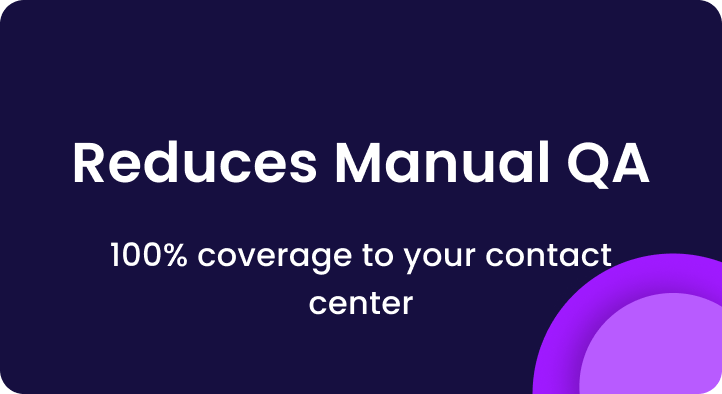Closing is the final step in the sales cycle.
This step will define whether the hard work that you have done in your previous steps amounts to anything or not.
It is like the break or make a moment in sales so you must approach this step with utmost care.
Now, it can be nerve-wracking to close a deal for a sales rep.
Sales closing techniques are the strategies and methods that salespeople use to finalize a deal or secure commitment from a potential customer. These techniques are designed to address objections, build trust and guide prospects to make a purchase.
That’s why we have handpicked 12 best sales closing techniques to help the sales reps win more deals.
With our list, you can find a variety of techniques that will help you to close sales effectively and efficiently.
Table of Contents
A. Traditional Close
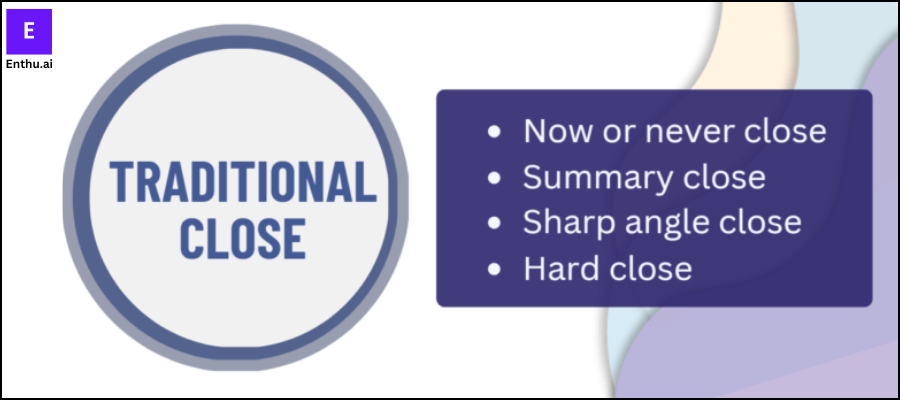
1. Now or Never Close
Also known as Urgency Close, this sales closing technique creates an urgency to prompt a customer into a buying decision.
In this, sales reps provide an offer or discount to the customer for a limited period.
This technique works when the prospect is on the verge of buying your product, i.e, they are interested but still holding themselves back from making a deal.
But remember to create value for your product before offering a discount because when a prospect values your product, he will grab the offer immediately.
This is your last chance to take advantage of our limited-time offer. Are you ready to commit and make the purchase, or are you okay with missing out? By the way, Enthu.AI helps you build, grow and maintain a Rockstar team by helping reps improve their sales skills such as prospecting, approaching, objection handling, with the least effort. The Summary Close technique is based on the concept of getting all good things together. In this, the sales reps summarize important facts, features, and benefits of the product which were already discussed before. Sales agents can create the summary either manually or with text summarizer. It is done so that prospects can recall all the benefits that they will receive out of this deal. Also, you must remember that this sales closing is effective when discussions are stretched over a long period. Just to recap, we’ve discussed your needs, and our product meets all of your requirements. Are you ready to move forward with the purchase? At times, prospects might become greedy and ask for a discount or added benefits because they know that they are at an advantage and also that you are expecting this. In this sales closing technique, you surprise the prospect by agreeing to the demands made by him but in return, you asked him to close the deal then and there only. But you agree to the demand only when your manager has given you the authority to do so. Considering the limited-time offer and high demand, it’s clear that our product is the best option. Would you like to secure your purchase now? Another name for the ‘Hard Close’ technique is the ‘Nothing To Lose Close’ technique. In this, you let the prospect understand that the reason for this conversation is selling. You have to be tough with the prospect and ask for firm commitments when to sign contracts when to implement, and whatever else needed to be done to close the deal. This technique is effective when the prospect is keeping you in dark and you need some clarity. Also, it works as a last resort, i.e, use it when you have nothing to lose. But remember do not use it too early in the sales cycle. This is the last day for the discounted price. If you don’t purchase now, the offer will expire and you’ll miss out on this opportunity. Are you ready to buy? This sales closing technique works on the principle of positive thinking. It means that you should believe from the start that you will close this deal. As per Forbes, optimistic sales reps outperform pessimistic sales reps by 57%. Also, when the prospect checks on most of the boxes during a sales process, it is assumed by the sales reps that this is a done deal. It works because sales reps do not give much time to think about the offer to the prospects as it can raise issues and objections which can lead to an unsuccessful deal. Sales reps must ask those questions that show it is a done deal. Great, let’s get your order processed and schedule your delivery for next week. Would you prefer morning or afternoon delivery? What would happen when you take away a toy or a candy from a child? The child will shout or cry because he now wants that thing more than ever. This same psychological thing is used in this closing technique and is implemented on prospects. If a prospect is resisting the offer you are making because of price, then you must provide him with a discounted price but at the cost of fewer features. When you do this, the prospect thinks more about the features you are taking away than the discount you are offering. Another thing you can do is to withdraw from the deal to push them towards the deal. This is effective when the prospect is just wasting time without showing any real progress. When a prospect sees that you are letting him go, it shows your confidence which will make the prospect rethink how good your product is. Based on what we’ve discussed, our product would be a great fit for your needs. Would you like to move forward with your order today? In the Question Close technique, the sales reps ask questions to provide the best solution to the prospect and eliminate any kind of objection that the prospect has. For example: a. In your opinion, is our product able to address the problem you are facing? b. Is there any reason for not moving ahead with the shipment? This helps reps to know the objections that otherwise might not have come out. It is an effective sales close technique used by salespeople to close sales. Can you see how our product can solve your problem and meet your needs? If so, what’s holding you back from making the purchase today? Read about agent coaching, so they close all the deals like a hero. A prospect will choose the product which can satisfy his needs. So you need to make sure that you should listen to the needs of the prospect and your product is able to deliver on that needs. As per HubSpot, 69% of buyers want sales reps to listen to their needs. To start with, you need to have a list of all the things that the prospect is looking for in a product. You should have this list before your call. After that, you should check the list against your product and put tick off the ones that are 100% match. The more ticks you see, the chances of closing the deal successfully increase. Now, you inform him about the benefits and features that exactly match the list of the prospect. This technique works best when the prospect is not sure of the value that your product offers. By telling him about the features, you are showing him the value of your product. Based on what you’ve told me, it’s clear that you need our product to improve your business. Let’s move forward with the purchase and start seeing results. Track all your customer sales conversations using speech analytics software such as Enthu.AI This Benjamin Franklin closing technique is based on the concept they used to follow to make a decision. He wrote down the pros and cons of a decision and based on that list he makes the decision. Similarly, you must make a list of the pros and cons of your product and help clients to make a decision. If you want to close the deal, the pros should be more than the cons. This technique is for those prospects that are not able to decide whether to buy your product or not. By providing them with the list, you are helping them to make the decision faster and in your favour. Let’s make a list of the pros and cons of purchasing our product. Based on what we’ve discussed, it seems like the pros outweigh the cons. Shall we proceed with the order? It is based on the concept that if the prospect recognizes the value of the product, he will not leave it. You can see the same when someone goes to buy a puppy at a pet store. If you let the customer play with the puppy, he will buy the puppy. So following the same principle, you must let the prospect try out the product and if he finds the product valuable then you know what it means. It is a highly effective technique because you are not pushing an individual to buy your product. You are simply waiting for him to give you the order. Take the product home for a trial period with no obligation. If you’re not satisfied, you can return it for a full refund. Sound good to you? In this, you believe that prospects are interested in your product and to make it easy for them you provide prospects with two different options for your product. The logic behind this technique is that whatever option the prospect chooses, it will only take you one step closer to the deal. You could provide them with two different pricing options, tiered levels of service with different features, implementation earlier vs later, etc. When you provide them with two options, you are simply making the decision-making process easy for them by letting them choose what they want to buy. Also, it is closely related to Assumptive Close. Would you like to start with our basic package or the premium package? Both have their benefits, and you can always upgrade later if needed. Most of the sales reps followed the predetermined steps mentioned in the sales cycle to close the deal. But what if you have to start at the end, i.e, asking for referrals? This method has come to be known as Backwards close where the end is the beginning. It is known to work for certain types of leads. It is believed that this closing technique is quite useful because customers feel at ease as they realize that you are not trying to sell them anything. As per HBR, 84% of buyers start their buying process from a referral. After that, you can start talking about the features and benefits of your product and close the deal. Imagine you’ve already made the purchase and are enjoying the benefits of our product. How does that make you feel? Let’s make it a reality today. By the way, Enthu.AI as a conversation intelligence solution gives insights about your sales rep performance which helps you close more deals and drive 5x revenue. After closing a sale, there are several important steps to take to ensure that the transaction is completed successfully and that the customer is satisfied with their purchase. Here are some of the key steps to follow: Take a few moments to review the details of the sale with the customer, including the product or service purchased, the price, any applicable discounts or promotions, and the delivery or pickup arrangements. This will help to ensure that both you and the customer are on the same page and that there are no misunderstandings or errors. Show your appreciation for the customer’s business by thanking them for their purchase. This can help to build rapport and encourage them to return in the future. Provide the customer with a receipt or confirmation of the sale, either in paper or electronic form. This will serve as proof of purchase and may be necessary for warranty claims, returns, or other purposes. Follow up with the customer after the sale to ensure that they are satisfied with their purchase and to address any concerns or questions they may have. This can help to build a long-term relationship with the customer and encourage repeat business. Record the details of the sale in your records, including the customer’s name, contact information, and the product or service purchased. This will help you to track sales and inventory and may be necessary for tax or accounting purposes. Take some time to reflect on the sale and evaluate your own performance. Did you effectively communicate the value of the product or service? Were there any areas where you could improve your sales techniques? This can help you to identify areas for improvement and become a more effective salesperson in the future. The above-mentioned sales techniques will help you improve your closing rate but you must remember that a single technique won’t help you close all the deals. You need to use different closing sales techniques for different people based on their needs, budget, opportunities, and so on. Closing a deal is an art and to master that you need time. You need to be patient because a technique will only work if you are efficient. The more efficient you are, the better the technique will work. 1. What is the closing technique in sales? In sales, a closing tactic is a way to wrap up a deal by getting the customer to agree. Some common tactics include summarizing the benefits, making special offers that create urgency, giving choices to help them decide, and asking questions to see if they’re ready and address any worries. These tactics help move the customer towards making a decision and closing the sale. 2. How to close sales deals? Understanding your prospect’s needs, providing a personalized solution, confidently addressing objections, and creating a sense of urgency are all essential for closing sales deals. Utilize closing techniques such as trial or assumptive closes and maintain regular follow-ups. 3. How to close a sale with 5 powerful closing techniques?2. Summary Close
3. Sharp Angle Close
4. Hard Close
B. Modern Close
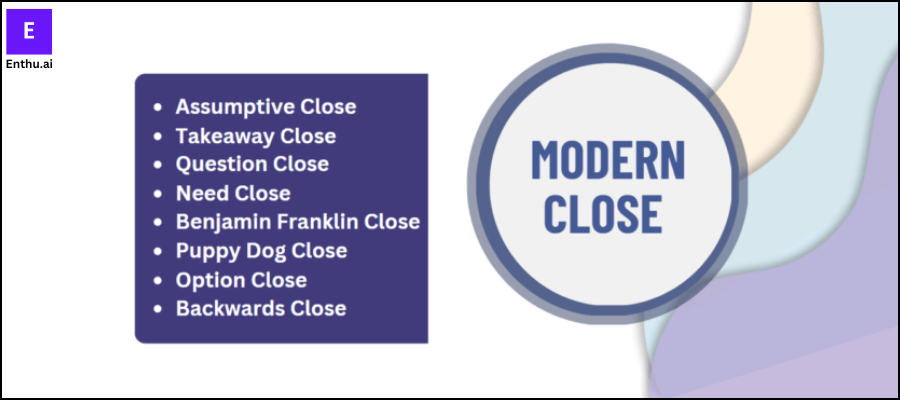
1. Assumptive Close
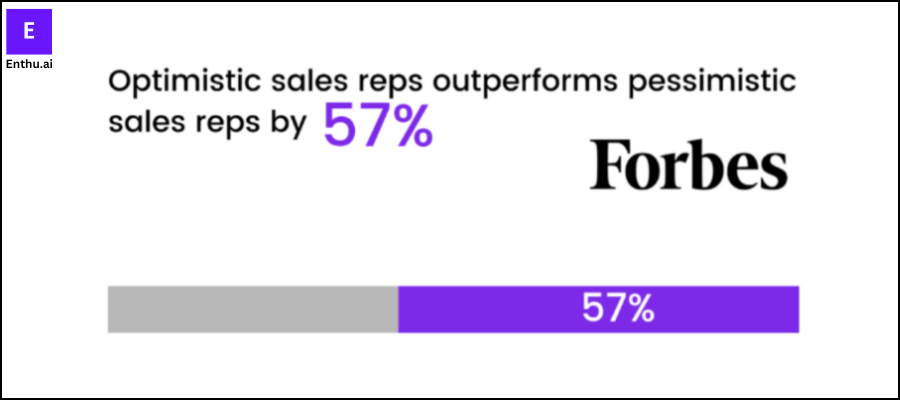
2. Takeaway Close
3. Question Close
4. Need Close

5. Benjamin Franklin Close
6. Puppy Dog Close
7. Option Close
8. Backwards Close

C. What do you do after closing a sale?
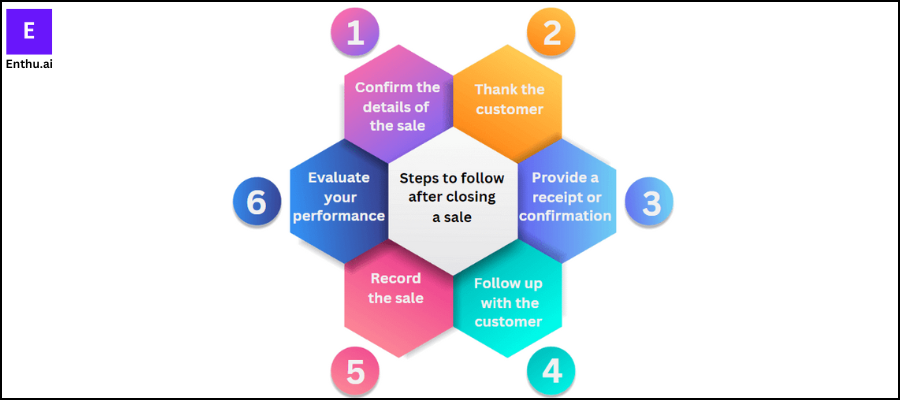
1. Confirm the details of the sale
2. Thank the customer
3. Provide a receipt or confirmation
4. Follow up with the customer
5. Record the sale
6. Evaluate your performance
Conclusion
FAQs




 On this page
On this page